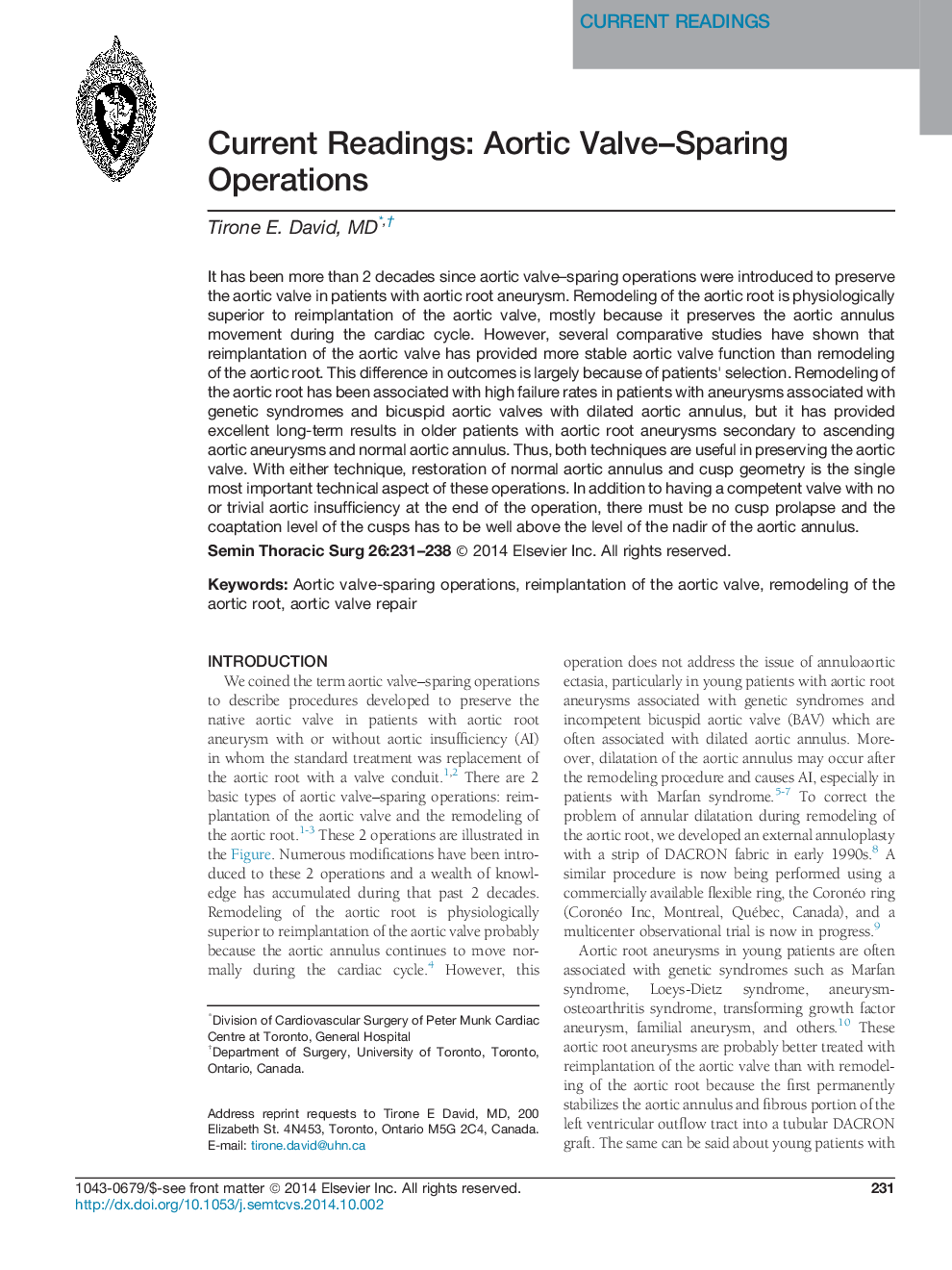| Article ID | Journal | Published Year | Pages | File Type |
|---|---|---|---|---|
| 3025076 | Seminars in Thoracic and Cardiovascular Surgery | 2014 | 8 Pages |
It has been more than 2 decades since aortic valve–sparing operations were introduced to preserve the aortic valve in patients with aortic root aneurysm. Remodeling of the aortic root is physiologically superior to reimplantation of the aortic valve, mostly because it preserves the aortic annulus movement during the cardiac cycle. However, several comparative studies have shown that reimplantation of the aortic valve has provided more stable aortic valve function than remodeling of the aortic root. This difference in outcomes is largely because of patients׳ selection. Remodeling of the aortic root has been associated with high failure rates in patients with aneurysms associated with genetic syndromes and bicuspid aortic valves with dilated aortic annulus, but it has provided excellent long-term results in older patients with aortic root aneurysms secondary to ascending aortic aneurysms and normal aortic annulus. Thus, both techniques are useful in preserving the aortic valve. With either technique, restoration of normal aortic annulus and cusp geometry is the single most important technical aspect of these operations. In addition to having a competent valve with no or trivial aortic insufficiency at the end of the operation, there must be no cusp prolapse and the coaptation level of the cusps has to be well above the level of the nadir of the aortic annulus.
